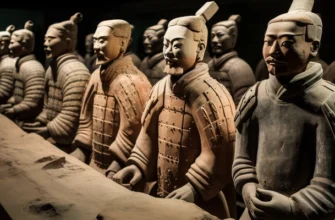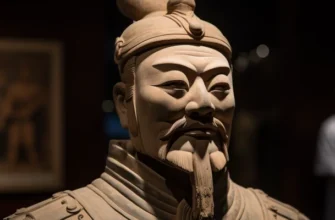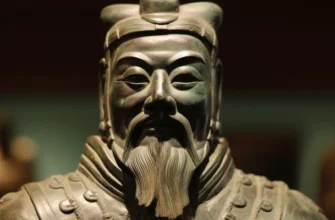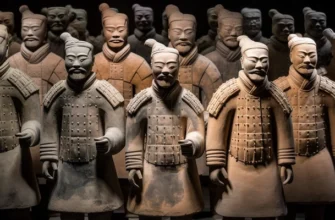The Qin Dynasty was a dynasty that ruled in China. It was founded by Shi Huang-di, who implemented reforms that strengthened the dynasty’s power and ensured the country’s stability. The Qin Dynasty made significant advances in politics, culture, and trade, which allowed them to become one of the most powerful states in the world. Some of the important reforms carried out by the dynasty included reforms in the taxation system, improving education and cultural development, as well as the development of trade and transportation. The Qin Dynasty ended its rule with the fall of the dynasty and the onset of the Manchu Dynasty.
The founding of the Qin Dynasty and the rise of its power
The Qin Dynasty was one of the longest dynasties in Chinese history, ruling from 1368 to 1644. The founding of the dynasty was associated with the end of the Five Dynasties and Ten Kingdoms era and the beginning of Shi Huang-di, who declared himself Emperor of Qin and became the first ruler of the new dynasty. During his reign, a large-scale reform was launched to consolidate the power of the new dynasty and ensure stability in the country. The Qin Dynasty reached its heyday during the reign of Yuanxi, who expanded the state’s territory and ushered in economic and cultural prosperity. However, the dynasty later became too corrupt and weak, which led to its downfall as a result of the onslaught of the Manchu Qin Dynasty.
Reforms and achievements of the Qin Dynasty
The Qin Dynasty, which ruled China from 1368 to 1644, was one of the most significant dynasties in Chinese history, due to its reforms and achievements.
The Qin Dynasty implemented a number of reforms to strengthen the power of the dynasty and improve the lives of the people. One of the most important was the change in the system of government, where the ruler was the central figure and his officials were elected on a competitive basis. This improved the quality of governance and reduced corruption.
Another important reform was the creation of a public healthcare system, including schools and hospitals, to improve hygiene and health of the people. A new tax and exchange system was also introduced, which increased state revenues and ensured stability in the economy.
The Qin dynasty made significant progress in the field of culture and art. A period that became known as the “Golden Age” of Chinese literature and art was initiated. Many masterpieces of literature, painting, and calligraphy were created, and new techniques for making ceramics and other crafts were developed.
The Qin Dynasty also advanced science and technology to a new level. New technologies were developed in the fields of railroads, bridge building, shipbuilding, and other industries. New methods of land cultivation were created that increased agricultural productivity and ensured the prosperity of the people.
The fall of the Qin Dynasty and the consequences of its power
Although the Qin Dynasty achieved significant success in its rule, it also experienced major problems. One of the biggest was corruption in the government, which led to the decline of the state. In addition, the Qin Dynasty faced problems of social and economic inequality, which caused discontent among the people.
In 1911, a national movement for freedom and independence began in China, which led to the overthrow of the Qin Dynasty and the end of the empire in China. A new republic was established, and with it came various changes in the country.
The Qin Dynasty left a significant mark on Chinese history. Its reforms and achievements in architecture, art, science, and technology influenced the country’s further development. In addition, its rule was characterized by the strengthening of the government and centralization of power, which became the basis for the subsequent formation of the state.
However, the Qin dynasty also led to the spread of social and economic inequality, and corruption in the government led to the decline of the state. These problems led to growing discontent among the people and eventually led to the fall of the dynasty.
Bottom line
The Qin Dynasty was a significant dynasty in Chinese history, and its achievements and reforms influenced the country’s further development. However,
its rule was also characterized by social and economic inequality, and corruption in the government led to the decline of the state and its fall. This was the result of discontent among the people and the national movement for freedom and independence. After the fall of the Qin Dynasty, China entered a period of revolutionary change and political instability that lasted until the establishment of the People’s Republic of China in 1949.
Despite the problems and consequences of its rule, the Qin Dynasty left a significant impact on the history of China and the world. Its achievements and reforms became the basis for the country’s further development and its entry into the world arena. Studying the history of the Qin Dynasty is important for understanding the modern Chinese state and its culture.








